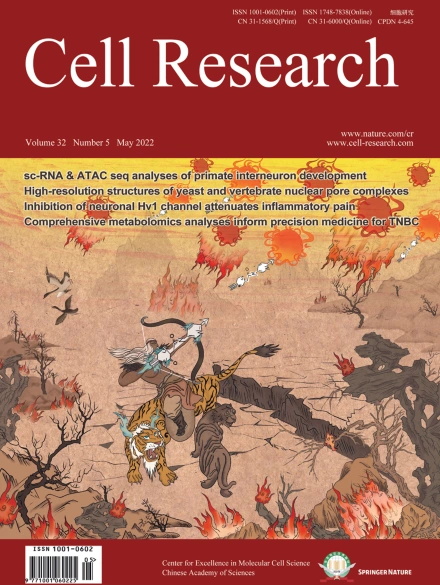
Advanced Search
Submit Manuscript
Advanced Search
Submit Manuscript
Volume 32, No 5, May 2022
ISSN: 1001-0602
EISSN: 1748-7838 2018
impact factor 17.848*
(Clarivate Analytics, 2019)
Volume 32 Issue 5, May 2022: 461-476
Inhibiting Hv1 channel in peripheral sensory neurons attenuates chronic inflammatory pain and opioid side effects
Qiansen Zhang1,† , Yimin Ren2,3,† , Yiqing Mo1,† , Peipei Guo1,† , Ping Liao2,† , Yuncheng Luo2,† , Jie Mu2 , Zhuo Chen2 , Yang Zhang1 , Ya Li1 , Linghui Yang2 , Daqing Liao2 , Jie Fu1 , Juwen Shen1 , Wei Huang4 , Xuewen Xu5 , Yanyan Guo1,6 , Lianghe Mei6 , Yunxia Zuo2 , Jin Liu2 , Huaiyu Yang1,* , Ruotian Jiang2,*
1Shanghai Key Laboratory of Regulatory Biology, Institute of Biomedical Sciences, School of Life Sciences, East China Normal University, Shanghai, ChinaBoth opioids and nonsteroidal anti-inflammatory drugs (NSAIDS) produce deleterious side effects and fail to provide sustained relief in patients with chronic inflammatory pain. Peripheral neuroinflammation (PN) is critical for initiation and development of inflammatory pain. A better understanding of molecular mechanisms underlying PN would facilitate the discovery of new analgesic targets and the development of new therapeutics. Emerging evidence suggests that peripheral sensory neurons are not only responders to painful stimuli, but are also actively engaged in inflammation and immunity, whereas the intrinsic regulatory mechanism is poorly understood. Here we report the expression of proton-selective ion channel Hv1 in peripheral sensory neurons in rodents and humans, which was previously shown as selectively expressed in microglia in mammalian central nervous system. Neuronal Hv1 was up-regulated by PN or depolarizing stimulation, which in turn aggravates inflammation and nociception. Inhibiting neuronal Hv1 genetically or by a newly discovered selective inhibitor YHV98-4 reduced intracellular alkalization and ROS production in inflammatory pain, mitigated the imbalance in downstream SHP-1-pAKT signaling, and also diminished pro-inflammatory chemokine release to alleviate nociception and morphine-induced hyperalgesia and tolerance. Thus, our data reveal neuronal Hv1 as a novel target in analgesia strategy and managing opioids-related side effects.
https://doi.org/10.1038/s41422-022-00616-y